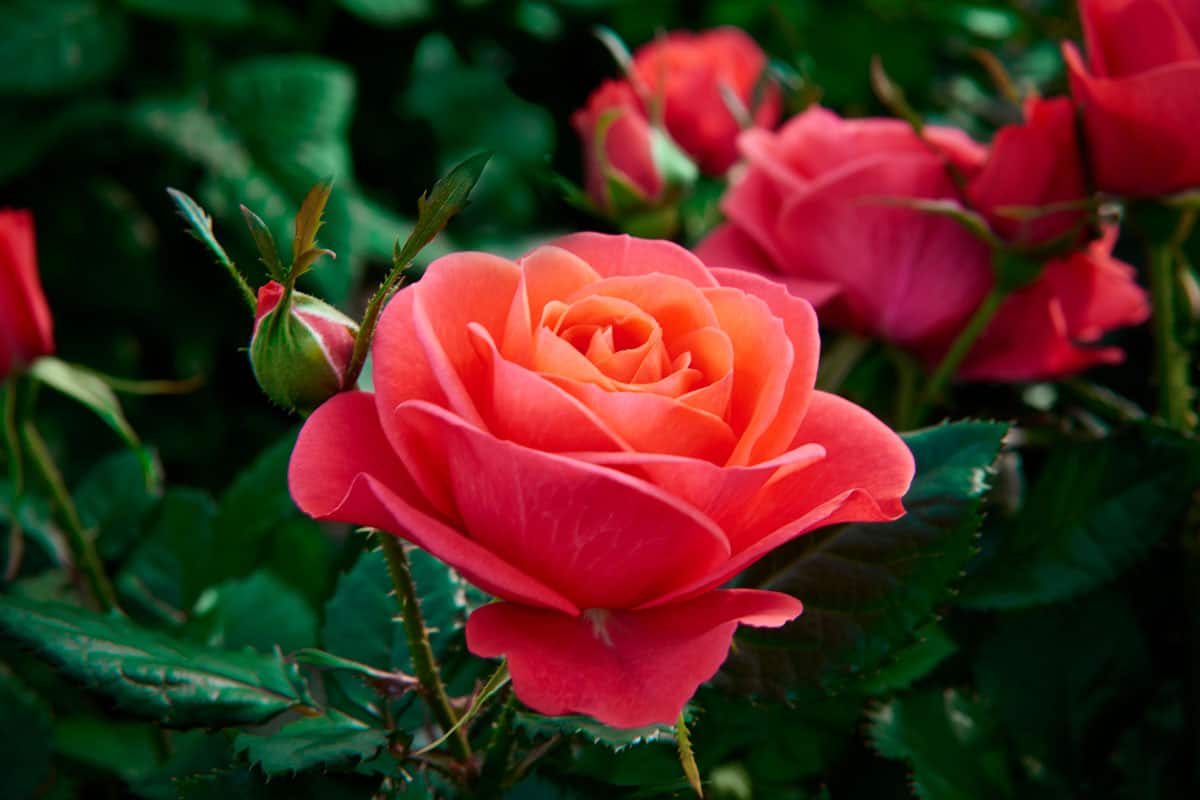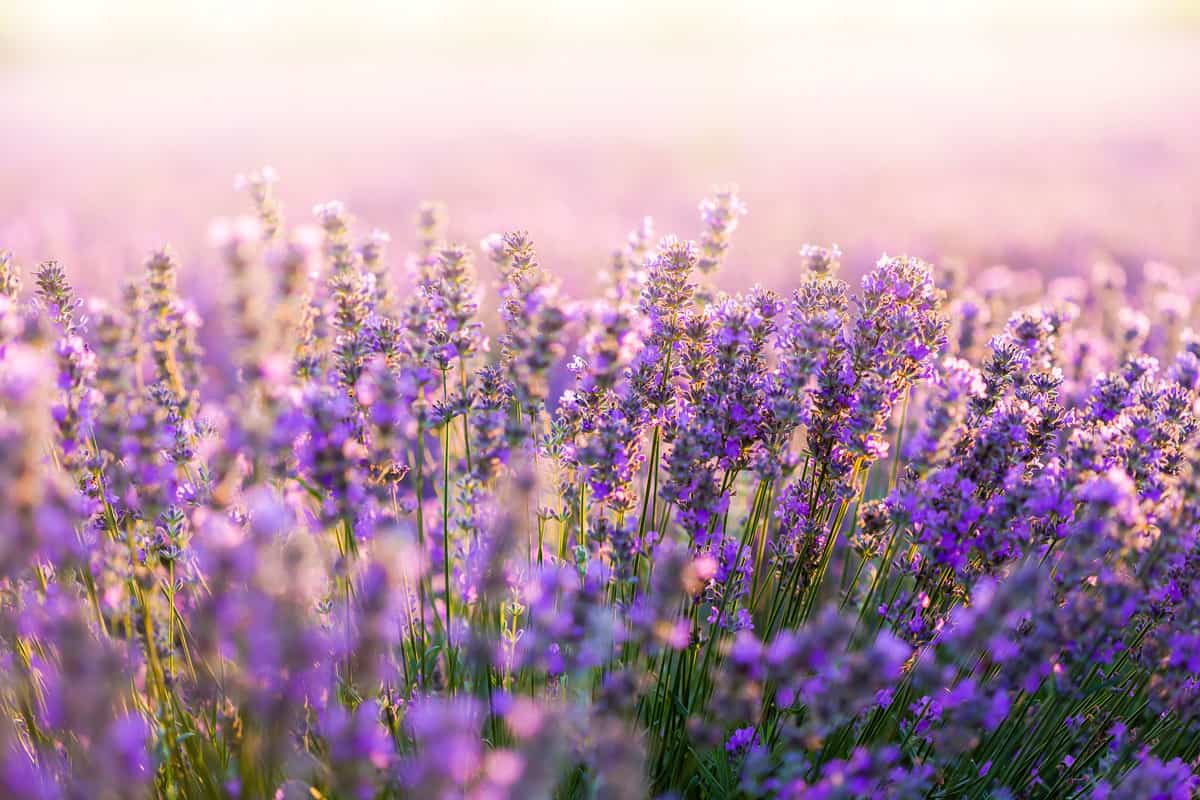
Peonies are like the timeless little black dress of the gardening world—classy, elegant, and simply gorgeous. These showstoppers can take center stage in a mesmerizing all-peonies display, or mingle with other blooming beauties in a well-planned flower garden.
But the secret to a breathtaking peony garden lies in choosing the perfect plant pals to keep your peonies company. Fear not, we've got you covered!
We've gathered a list of 16 fabulous companion plants that will have your peonies beaming with joy and your garden looking like a dream come true.
So get ready to roll up your sleeves and create a floral wonderland where peonies and their charming companions dance together in harmony, making your garden the envy of the neighborhood.
1. Bearded Irises
The Bearded Iris is a frilly flower that comes in a variety of colors — pink, red, purple, yellow, blue, and orange. This flower's name comes from the way its drooping petals resemble a beard.

The Bearded Iris is one of the easiest perennials to grow, as it requires very little maintenance.
Click here to buy seeds on Amazon.
2. Siberian Irises
The Siberian Iris is also known for its vibrant and diverse color range that adds a colorful burst to any garden. This particular variety is often streaked with complementary colors that give them a particularly mystic, awe-inspiring aesthetic.

The Siberian Iris has long-lasting blooms, and it requires very little maintenance aside from regular watering. Another great match for peonies.
3. Columbines
The Columbine is a dainty perennial that has 2 distinct petal layers in full bloom. Clusters of small, yellow buds radiate from the flower's center in full bloom. The Columbine's contrasting color scheme is a great complement to virtually any garden.

Hummingbirds love this flower, so you plant them in your garden, you'll be sure to attract these small pollinating friends.
Click here to buy seeds on Amazon.
4. Alliums
Alliums are a tall, slender perennial plant topped with a bushy, globe-shaped array of flowers. These flowers are typically shades of blue and purple. Given their particularly unique aesthetic quality, these flowers can be creative additions to any part of a garden.

Due to their tall, skinny stems, squirrels and deer have a hard time damaging them.
Click here to buy seeds on Amazon.
5. Roses
The rose is arguably the most popular flower in the world. This is likely due to the fact that roses come in nearly every color imaginable. Given their color and size range, roses go exceptionally well in just about any garden.
Roses are able to grow well virtually anywhere, but they do best in warmer regions and make great companions for peonies.

Roses have developed a reputation for being difficult to grow, but this is really only the case when trying to grow roses that are aesthetically flawless. There are typically few, if any issues when growing roses as simple garden complements.
6. Bleeding Heart
The Bleeding Heart has heart-shaped flower petals that bloom toward the bottom, which makes the heart shape split at full bloom. What's more, this flower is usually pink, which accentuates its namesake.

These flowers are generally sun and heat tolerant, with some hybrid varieties being even hardier.
The Bleeding Heart is deer resistant, so you don't have to worry about them being damaged.
Click here to buy seeds on Amazon.
7. Foxgloves
Foxgloves are colorful cone-shaped flowers that droop down when fully bloomed. They're typically purple or light pink, and the insides are speckled with dark spots.
These flowers are known for attracting bumblebees.

Foxgloves grow best when they're given ample space around them, so don't overcrowd them or plant them in close proximity to other plants.
Click here to buy seeds on Amazon.
8. Hydrangeas
Hydrangeas have small but colorful clusters of blooms. They're usually pink, purple, or a combination of these colors.

Hydrangeas don't require much in terms of maintenance. Regular watering and adding mulch occasionally is all that's necessary to keep these flowers looking full and beautiful.
9. Plantain
The plantain is a flower with a unique, cone-like shape. They're usually dark purple, with a ring of small, orange buds separating the inner and outer layers of petals. This plant will only flower once.

This plant actually bears fruit, so it's particularly useful for cooking!
10. Lavender
Lavender is a small, slender, dainty flower that's purple in color. Up close, it has a fuzzy texture, and its blooms are extremely small.
This flower is particularly well known for its unique aroma and for its oil.

Lavender requires a lot of water at a time, but it can go for some time without being watered.
11. Daffodils
Daffodils are a wide, yellow flower with 2 layers of petals — one wide layer at the back with a cone-shaped bud. At full bloom, these flowers perk up and look straight ahead, giving them a unique aesthetic appeal. These well known yellow flowers make an excellent addition to a garden in need of some colorful pop.

Daffodils require relatively little maintenance as long as they aren't in extreme heat and humidity and are watered regularly.
12. Camellias
Camellias resemble large roses in shape and color. Camellias grow on shrubs that can grow between 6 to 12 feet in diameter, and they do well in the shade. Their perfectly round semicircle petals make the flower look almost fake. Their soft, elegant appearance makes them a noteworthy addition to any garden.

Camellias are known for their long lives; some live as long as 100 years!
These plants are relatively hardy. They just require regular watering, with slightly more in hotter conditions.
13. Pincushion Flower
The Pincushion Flower gets its name from the small pin like buds that radiate from the center of the flower, which resembles pins in a pincushion. These flowers are typically cool colors — shades of blue and purple.

These flowers provide constant blooms, and they attract tons of butterflies. They withstand periods of drought, and they require very little maintenance. In fact, rather than painstakingly deadhead its petals, it's recommended to just shear the plant when its blooms diminish.
Click here to buy seeds on Amazon.
14. Geraniums
Geraniums are one of the most diverse flower groups. They come in all shapes, sizes, and colors, which means there's a place for geraniums in any garden. Given their aesthetic diversity, geraniums truly are the best go-to plant to complement different parts of a garden.

Geraniums are known for requiring very little maintenance. What's more, these resilient plants can withstand periods of drought with ease.
Click here to buy seeds on Amazon.
15. Day Lily
The Day Lily is a unique looking flower that can add some warmth to a garden. They're yellowish orange with complementary streaks running down the petals. Dainty red-tipped buds can be seen sticking out of these flowers at full bloom. Some Day Lilies have long, slender petals, and others have shorter, broader petals.

The Day Lily can tolerate various types of soil, they resist pests and disease, and they provide constant beautiful blooms with very little maintenance required.
Given the diversity of height in Day Lilies, these plants are extremely versatile in terms of their placement within the garden.
16. Azalea
Azaleas are similar to daylilies in terms of their shape, but they're particularly well known for their cooler, purple and pink shades. Depending on the color scheme, these flowers can have soft white petals that are elegantly streaked with pink accents. Dainty pink buds protrude from this flower's center.
When Azaleas are clustered together, they form beautiful colorful shrub-like masses.

Azaleas are known for living for a long time with little to no maintenance outside of regular watering.







